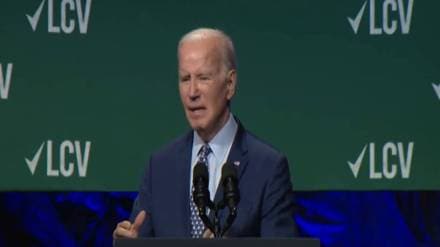Recently, the President of the United States, Joe Biden, made a statement that sparked both intrigue and mockery across social media platforms. He spoke of plans to construct a railroad from the Pacific all the way across the Indian Ocean. “We have plans to build a railroad from the Pacific all the way across the Indian Ocean,” US President Joe Biden told the League of Conservation Voters in Washington, D.C., “We have plans to build in Angola, one of the largest solar plants in the world. I could go on, but I’m not. I’m going off script. I’m going to get in trouble,” he added. Trolls on social media had a field day and the President was ridiculed for this gargantuan railway plan.
Little did the world know that his words held not one, but three distinct interpretations.
1 – The outrageous plan
The first interpretation captured the imagination of skeptics and fueled the trolls. They envisioned a grandiose vision of massive railways traversing the vast expanse of the Pacific and Indian Oceans. This interpretation, however, seemed implausible, laden with technological, geological, weather, and resource challenges. Critics ridiculed Biden, dismissing the notion as an impossible dream.
2 – Reviving the old “dream”
The second interpretation delved into a more realistic scenario, albeit still shrouded in geopolitical complexities. This perspective suggested that the United States aimed to build railways connecting Siberia with Alaska, spanning the narrow stretch of the Bering Sea that separates Asia and North America. However, given the current enmity between the United States and Russia due to the Ukraine war, this vision appeared far-fetched. Diplomatic tensions cast a shadow of doubt over the feasibility of such a venture.
3 – The realistic approach
Finally, the third interpretation emerged as the most plausible and relevant understanding of Biden’s statement. It entailed the United States investing heavily in railway projects across the Indo-Pacific region, marking a significant commitment to infrastructure development. The President’s subsequent mention of plans to build one of the world’s largest solar plants in Angola provided a crucial clue. The US intended to spearhead infrastructure initiatives that stretched beyond its borders, fostering connectivity and collaboration.
There is news that the US is planning a new initiative to create a major rail network, linking nations in the Indo-Pacific region. Collaborative discussions with countries such as the United Arab Emirates, Saudi Arabia, and India gained traction, hinting at the potential for an expansive railway system. These plans aimed to enhance trade, cultural exchange, and geopolitical stability across the region. The US envisioned a network that would bring economic growth, innovation, and shared prosperity.
As the story unfolded, it became clear that while the initial interpretations had captured the attention and sparked debate, it was possibly the third option that resonated with Biden’s broader vision. The United States probably plans to embark on a bold journey, investing in infrastructure projects that transcended borders, fostering connectivity, and leaving a lasting impact on the Indo-Pacific region, and taking the challenge from China head-on.
